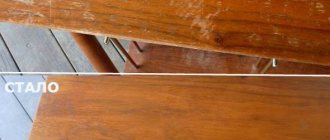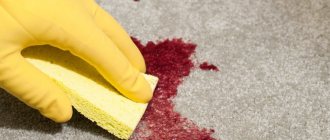A car reflects the essence of its owner. That's why it's so important to keep it clean and tidy. And in order to know how to remove various stains from a car body, it is important to follow the effective recommendations of experienced motorists.
Removing stains from a car body
During operation, the vehicle is exposed to various environmental factors: a bird has perched, leaves have stuck, marks remain after the sticker, the body is stained with resin, or stains from the asphalt surface appear. The list can be continued indefinitely, but this is not the main thing. The first thing a car enthusiast needs to know is what products to use to remove these stains on the car.
Unusual but working lifehacks that will help clean your car.
For many of us, the process of washing a car is something special and even sacred. Some people prefer to pay money by washing their car at a car wash. Some people like to do it themselves, not trusting their car to other people. But no matter who washes your car, many car enthusiasts are always interested in various tips and life hacks for car washing, many of which can really make the process of cleaning your car from dirt easier.
There is a huge amount of similar advice. Today we present to you the most unusual and strange life hacks that, surprisingly, really work.
Washing technology
Knowing the characteristics of the chosen chemistry helps you figure out how to wash your car yourself. When using “active foam,” the washer allows it to flow down the body using an AED. This type of chemistry cleans as it flows over the surface.
The car should be washed horizontally. It is not recommended to perform rotational movements - they do not allow you to properly clean the paintwork without streaks.
Before washing your car, areas such as drainage holes in doors, fenders and sills are checked and cleaned. If this is not done, moisture will accumulate in various cavities, causing corrosion.
Car washing technology:
- The washer moves in a circle. After he goes around the car once, the foam will remain on the roof of the car. There will be much less of it on the side surfaces.
- Then the driver walks around the car a second time to wash off any remaining foam and rinse the roof.
- Open the car and wash the sills and lower edge of the doors with a small stream of water. If you act carefully, water will not get into the cabin, and the thresholds will be cleared of sand.
- Manual car washing is carried out taking into account the “2 buckets” rule. Clean water is poured into one of them, and car shampoo for manual cleaning is poured into the second. Carry out washing with a large-pored sponge (not foam rubber). Foam cannot absorb small particles such as sand or small debris.
During mechanical washing, direct movements are performed without pressure, so as not to scratch the paintwork with remaining particles. The basic rule is to rinse the sponge after cleaning each element. Only after this can the solution with shampoo be applied to the surface of the body parts.
Bumpers, sills and wheels are washed with a separate sponge. For hard-to-reach places (moldings, gas tank hatch, badges and grilles), prepare a brush. After mechanical cleaning, the machine is rinsed from the HVAC. Car rims are washed with a brush and a soft sponge. To protect the elements, special wheel wax is used.
Use Coca-Cola to clean your windshield
When it rains after a long dry spell, a dirty windshield becomes one big mess due to the dirt being partially baked into the surface of the glass.
As a result, neither rain nor windshield wipers help clean the surface. As a rule, the windshield in this case will look like dirt spots. If such spots begin to bother you right on the road, there is a temporary solution to this problem. See also: 37 Unusual Ways to Use Coca-Cola
Take an old towel, a large rag, and place it at the bottom of the windshield to protect the paint on your car's hood. Next, take Coca-Cola and pour it on the windshield. Gas bubbles will quickly erase dirt on the glass. However, keep in mind that after such treatment the glass will become sticky, which will attract new dirt.
Therefore, after treating with Coca-Cola, it is necessary to rinse the glass with water. Despite some inconveniences associated with using a sugary drink, this hack works great as a temporary solution to poor visibility due to dirt stuck to the windshield.
Wood resin and glue from poplar buds. Holes in the varnish
This problem is often encountered by motorists who park in the shade of spreading trees. It would seem that what’s scary about tree resin? Natural products, by definition, should be healthy. But in reality the opposite is true. Wood resins combine easily with heated varnish. The higher the temperature of the paintwork, the faster adhesion occurs. The leaders in the risk group are Japanese cars, which traditionally have softer and thinner varnish. If the resin or wood glue has time to combine with the varnish, the marks will remain on it forever.
Tree sap is a real problem. Firstly, it is really difficult to wipe off without damaging the varnish. Secondly, if you do not remove it immediately, it becomes attached to the varnish layer, and even after removing the old stain, the varnish layer looks damaged. Therefore, very often, owners of expensive cars immediately go to specialists with such contaminants.
- In some cases, these are stains that can only be removed by polishing.
- In some cases, these are craters that can only be removed by painting.
Myth. Any tar stain cleaner can remove tree sap.
Is it true. Only a few bitumen cleaners deal with tree resins. Bitumen and tree resins have different natures and chemical compositions, so it is correct to use special cleaners to remove them.
Myth. There is no protection against tree resin. The main thing is not to let the resin eat into the paint. The faster you wash it off, the lower the risk of permanent stains.
Is it true. Some types of ceramic protective coatings such as “liquid glass” are highly resistant to tree resin. Yes, with prolonged contact, even the coolest ceramics will most likely succumb to the poplar “glue,” but the factory varnish will remain intact. The rule “The faster you wash it off, the less the risk” also applies in this case.
This is the same “orange” cleaner that professionals use to remove organic contaminants. Including tree resin. Services and detailers buy this product in large canisters. For household use it is bottled.
Wash yourself? Or not wash?
- If the stains appeared recently and formed on a cold body, then it is better to clean them right away - yourself. You need to use a special cleaner. Directions for use are written on the packaging. They must be respected.
- If the stains are fresh, and they appeared on a hot body, then it makes sense to quickly send the car to detailing. Precisely in detailing, and not in “animal washing”. During detailing, the car will be properly cooled and washed with “orange” - a special composition containing fruit components that perfectly wash out the resin and do not destroy the varnish.
- If the stains are old and the dirty surfaces have been heated, you need to send the car to a detailer to have it cleaned, polished and treated with protection.
There are also special means in nature for removing poplar buds. But it should be remembered that even such car cosmetics work if used in a timely manner. If you are late, a rough spot will remain on the paintwork.
Vodka as a windshield washer fluid
This is probably the most famous method of alternative to winter antifreeze, which came to us since the times of the USSR, where motorists did not know what a branded antifreeze was.
See also Do- it-yourself anti-freeze
Probably, lovers of strong drinks will not approve of this method, like the Goonie in the film “Operation “Y” and other adventures of Shurik” (break half a liter!).
However, if you do not have the opportunity to pour normal factory anti-freeze into the windshield washer reservoir, vodka can be irreplaceable. However, please note that we would not recommend using vodka in its pure form. It’s better to use vodka to make not only an anti-freeze agent, but also a full-fledged windshield washer fluid. Here is the mixture you can prepare:
Fill a plastic screw cap bottle with 3 cups of vodka (the cheapest you can find), 4 cups of water, and add 2 teaspoons of liquid dishwashing detergent.
Screw the cap onto the bottle and shake it well, then pour as much liquid as needed into the windshield washer reservoir.
Afterword
The modern chemical industry produces cleaners for almost all types of contaminants. It is important to choose them thoughtfully and apply them wisely. If a product from one manufacturer does not work, this does not mean that an analogue from another brand will be just as useless. And price is not always an indicator of effectiveness. Sometimes cheap auto chemicals work better than expensive ones. If one cleaner doesn't work, you need to try another.
This car is treated with iShield ceramic protection. The coating forms a layer with a hardness rating of 9H+. It protects against foreign paints and is not afraid of droppings and insects.
But if you are not inclined to risky experiments, then it would be better to immediately turn to detailing specialists. They will apply a hard protective coating to the paintwork - ceramics or liquid glass. A durable protective layer will absorb all negative influences, be it bitumen, paint from markings, poplar resin, crushed insects or bird droppings. This protection does not always save you from stones flying at high speed, but surviving service in a beast washer without consequences will easily help.
Make your car headlights shine
We all know that headlights in a car play one of the most important roles in vehicle safety. Accordingly, every driver is obliged to keep lighting sources clean. Poor visibility on the road due to dirty headlights is a risk of getting into an accident. That's why it's so important to clean your headlights of dirt before you hit the road.
Unfortunately, over time, the headlights begin to dim (become cloudy). To prevent this from happening, regularly clean your headlights with more than just a regular rag and water. To keep your headlights as clear and shiny as possible, use window cleaner (available at any hardware store or supermarket). Old women's tights are perfect as a polishing material; they will 100% not leave streaks or scratches on the headlight glasses.
Removing scratches
Often, car drivers themselves leave various scratches on the body, which significantly spoil the appearance of the car. What to do? The modern market of cleaning products offers a lot of options on how to remove a scratch, from special pencils that remove operating errors in one second, as well as polishes with an “anti-scratch” effect.
Anti-scratch polish effect
Of course, small chips can be removed in this way, but serious damage will require professional help from specialists at a car repair shop. And also be sure to watch the video:
All car body cleaning products are used in the same way:
- applied in a generous layer to the area of contamination;
- stand for 5-10 minutes;
- washed off with water;
- The body is rubbed with a soft sanding sponge.
It is important to carry out cleaning in a well-ventilated area and use special eye and hand protection.
Attention! All modern drugs are very active, and if used incorrectly, they can cause significant damage to the car. You can recommend proven products, gasoline, simple solvents, acetone or diluted kerosene. Yes, they leave a persistent odor, but they can’t damage the body of the car that much.
All such problems can be prevented rather than dealing with various external damage to the car. To do this, you must not park in places where parking is prohibited. It’s better to spend 5-10 minutes in the morning cleaning the car body from minor dirt than to mess around with toxic substances for several hours.
Wash your car in a timely manner, and also regularly apply a special protective coating, which costs several times less than new-fangled cleaning products. When driving onto a road with a fresh bitumen surface, you should maintain a low speed and make a minimum number of maneuvers. Move along the rolled track and keep a large distance between the trucks in front, from under whose wheels particles of the asphalt surface will fly.
Let all your car care products be at your fingertips, in a small box in the garage or in the trunk of your car, away from fire and mechanical damage.
Have a nice trip and less pollution!
Use feminine pads to clean your windshield
What could be worse when your car suddenly runs out of windshield washer fluid while driving in bad weather? Or, for example, when driving on the highway, the pump in the washer reservoir failed or the reservoir itself began to leak. In this case, you will have to constantly stop and clean the windshield manually. If you have feminine sanitary pads with you, the process of manually cleaning your windshield will become much easier.
See also: 19 Ways to Use Super Glue You've Never Tried (But Should!)
If not, we recommend throwing a pack of gaskets in the trunk. Who knows, maybe someday it will come in handy for cleaning glass. Especially if you plan to travel far. The gaskets will not only absorb dirt and water well, but will also help remove stains from the glass.
Which Vanish should I choose for my car?
The Vanish name includes products for cleaning stains from clothing, carpets, furniture upholstery and other textile products.
The release form is different:
- spray;
- moistened powder;
- shampoo.
The spray is completely ready for use, just press the dispenser. The shampoo must first be diluted with water in certain proportions and beaten with a sponge or brush until foam appears.
The powder, like the spray, is ready for immediate use. Each of these means has its own advantages and disadvantages.
Shampoo or spray?
The most popular among car enthusiasts are two types of Vanish products:
- Shampoo for manual cleaning of carpets . It is a medium-thick liquid that is whipped in water until rich foam. The resulting foam is distributed over the contaminated surface, wait until it dries completely and vacuum thoroughly. Judging by the reviews, the product is used sparingly, and its cost is completely justified - 300-370 rubles. for 600 ml.
- Foam for cleaning furniture upholstery . The product comes in the form of a spray and produces foam immediately after spraying, which should simplify the cleaning process. However, car enthusiasts leaving reviews on online forums note that the spray is not entirely convenient to use. The foam is absorbed into the upholstery instantly, so it is difficult to treat the entire surface evenly and efficiently. The spray is consumed quickly, and its cost is slightly higher than that of shampoo: 350-410 rubles. for 600 ml.
Powder: effective, but inconvenient
Vanish in powder form can also be used to clean seats, but several significant disadvantages do not allow us to make a final choice in its favor:
The powder cleans worse than its analogues in the form of shampoo or spray. It is suitable for getting rid of fresh, superficial stains.- When cleaning with powder, no water is required; just sprinkle the product over the surface.
On the one hand, this is an advantage, but on the other hand, it is a disadvantage. The powder cannot be distributed evenly on a vertical surface, so the seat backs will have to be removed or another product must be used to clean them. - The powder is difficult to remove completely.
Its microscopic particles fall between the fibers of the fabric and become inaccessible to the vacuum cleaner. On such a seat, at the slightest contact with moisture, streaks will begin to appear (for example, if you sit on the seat after running several meters in the rain). Under no circumstances should such upholstery be washed, as the manufacturer himself notes in the instructions; you can only vacuum it after it has completely dried. If repeated vacuuming does not help, you will have to contact cleaning specialists for help.
Shampoo for washing vacuum cleaners: a firm no
It is worth noting such a product as shampoo for washing vacuum cleaners . Theoretically, it can be used to clean car seats, but in practice this is impossible. Even the smallest attachment will be too bulky for the seats.
The idea of using detergent for vacuum cleaners during manual cleaning is also not a good one. Products intended for special equipment always have a higher concentration of active substances.
This means that you will have to be in contact with a fairly aggressive substance for a long time, which can affect your overall well-being. And it is unknown how safe such an active product is for seat upholstery.
Clean the windshield wiper blades
Unfortunately, even new windshield wiper blades may not clean the glass as effectively as you would like from time to time. The fact is that the blades can become dirty, causing them to stain the windshield. This is why it is so important to keep them clean. For example, this can be done using a self-prepared liquid. To do this, prepare a solution of 1/4 cup of ammonia and 1 liter of water.
See also: This is what the windshield wiper system on a car consists of
Then carefully lift the windshield wiper blades and wipe the resulting fluid onto both sides of the wiper blades. This can be done with a soft cloth or paper towel soaked in the solution. Then wipe the brush blades with a dry cloth before lowering them into place.
Professional dry cleaning: how much and when?
One of the reasons for cleaning car seats yourself is the high prices for this type of service. In the regions the cost is 3,000 rubles. and higher; in Moscow – from 5000 rubles.
It is difficult to determine the upper price limit; it depends on related services, location of the salon, type of upholstery, type of car body and many other factors.
In some cases, it is still worth turning to professionals, despite the high prices . These include:
- Old, difficult to remove stains. There is a risk of wasting your time and nerves without any tangible results.
- Traces of glue, plasticine, chewing gum. Vanish is not intended to remove this type of contamination, so the smart solution would be to contact a specialist.
The need to clean not only the seats, but also the entire interior.
Practice shows that it is possible to deal with the seats yourself, but cleaning the ceiling causes great difficulties. You have to constantly hold your hands up, rubbing the cleansing shampoo with force. As a result, your hands quickly get tired, it’s impossible to apply foam evenly, and as a result, stains from the cleaning agent are added to the dirt on the ceiling.- Lack of time. Preparing the seats for cleaning will take about 30-40 minutes. Add to this the time for applying the foam, waiting, subsequent removal of the foam and final drying.
As a result, the entire cleaning will take at least 5-6 hours. At the same time, in order to save time, you should not neglect any stage.During the same time, specialists will clean not only the seats, but the entire interior. In addition, professionals use special equipment to dry the car, which reduces cleaning time without compromising quality.
Improve your visibility while driving
Another tip for keeping your car windows clean and clear. To do this, prepare the same liquid that we advised to use for cleaning windshield wiper blades. Add 1/4 cup household ammonia to 1 liter of water in a plastic bottle with a waterproof cap and keep it in your car to clean windshields and windows.
As soon as your windshield or side windows start to get dirty, pour the solution onto a sponge and then apply the liquid to the windows. Then dry the glass with a soft cloth or paper towel.
What places need to be washed
Washing the car body is carried out taking into account several important points. It is necessary to remove surface dirt from it using a high-pressure apparatus. If this is not done, small sand particles will scratch the surface during mechanical washing. You should wash windows carefully to prevent minor damage.
The best option is to clean the car both top and bottom. The engine, suspension and underbody require flushing. Chemicals on the road can corrode paintwork and metal. Since to fully clean the suspension you will have to remove the wheels, it is better to perform the procedure at a special station. The interior is thoroughly cleaned before washing the exterior elements. Cleaning is carried out regularly and thoroughly.
Baking soda is an excellent car cleaner.
Add 1/4 cup baking soda to a 5-quart plastic canister, then add 1/4 cup dishwashing liquid to the canister. Next, fill the canister with water almost to the top. Screw the cap onto the canister and shake well.
See also: How to properly use anti-rain on car windows?
Store the prepared cleaner concentrate for later use. When it's time to wash the car, shake the canister well again and pour a glass of concentrate, mixing it with 8-10 liters of water. Fill a bucket with warm water and mix in a homemade cleaning solution that you can use to wash your car.
Paint stains or graffiti
It is not difficult to remove intricate patterns from street scoundrels; you can use KOKH 43001 - EULEX, GraffiGuard and other chemicals. They will also help remove traces of glue, ink and felt-tip pens.
Important! Paint cleaning products in concentrated form can damage the paintwork, it is important not to be overzealous, but first of all try to wash off traces with warm water and soap, and only if there is no positive result, use modern solutions.
How to remove grease from car windows
Sometimes a greasy, oily layer appears on car windows, which is very difficult to remove. Especially if you often drive in rural areas on country roads. The worst thing is when the windshield becomes covered with such greasy dirt. To remove this grease, use dishwashing liquid or tooth powder. Then wash the glass with soapy water. Finally, rinse the glass with plain water and dry the glass with a microfiber cloth or waffle towel.
How to remove stains from car seat upholstery
You can try to clean dirty seats yourself or use dry cleaning services in a special salon. If there are no financial problems, then this will be the best option. Otherwise, you will have to deal with the problem yourself. To clean up dirt, you can use the means available in every home. The result is excellent, stains disappear, and the interior becomes clean and tidy again.
To prepare the product you will need:
- dilute 5 small tablespoons of citric acid in 200 ml of water;
- add a little detergent used to clean dishes;
- When the foam subsides, you will need to pour the product into a spray bottle.
In the cabin, find the problem area and pour baking soda onto the stain. Lightly rub the area, then apply the miraculous solution to it. Foam appears, thanks to it even dirt from deep fibers is removed. When a couple of minutes have passed, the composition must be removed using a clean rag.
Protecting the car body from water without wax
Add 1 cup of kerosene to a 3-liter bucket filled with water. Attention! If using less water, be sure to reduce the amount of kerosene to avoid damaging the paintwork. Then apply the solution to the car. Now you won't need to apply expensive wax to your car. The resulting solution perfectly replaces wax. So, by treating your car with the resulting solution, the next time it rains, the rainwater will roll off the body faster, reducing the likelihood of rust.
Removing traces of tar
Tar stains on a car body
Once you drive along a newly paved road, bitumen stains will immediately appear on the car body. Two things are perfect for eliminating them: white spirit solvent and aviation kerosene. Yes, they do their job perfectly, but they leave an unpleasant odor for a long time.
If such a product does not suit the car owner, you can try using modern factory cleaners; the effectiveness is the same, but they smell nice. You can also use a modern odorless product - BOS (Bitumen Cleaner Sitranol). This product contains petroleum fractions with specific additives; the composition is easy to apply and quickly eliminates the problem.
You shouldn’t rub the stains that appear too long and hard, so as not to damage the car’s coating. It would be correct to apply the composition for a few minutes, and then wipe with microfiber. Then treat the body with active foam and rinse with a strong stream of water.
Do not wash your car in the heat when the body is hot
“Washing a car when it is too hot, for example immediately after driving it or when it has been parked in direct sunlight, can lead to the formation of soap spots and deposits,” warns expert Anton Steganov, director of a car wash in Krasnodar.
Tree resin.
Flowering trees, especially such as poplar, linden, birch, and their active release of resins necessarily affect the appearance of the car - they leave sticky yellow stains that are difficult to remove. Even if the nearest tree is located half a kilometer away from your usual routes, and even if it is a palm tree in a tub in your office, there is no guarantee that one morning you will not think about how to clean linden resin from the body of your car. Well, or how to remove traces of poplar buds from the snow-white hood.
There are quite a lot of means for cleaning the car body from tree resin. In addition to the mentioned VD-ashki, you can use, for example, Decabit (Atas). It is better to clean the white body with a suitable type of Profoam, the main thing is not to delay it, and follow the instructions. If auto body chemicals are not sold within a certain number of kilometers, we return to folk remedies. The same white spirit, diluted alcohol or vodka will do. If your soul hurts at the last words, find margarine or sunflower oil - soak, rub and that’s it. Although no, not all - you will still have to remove greasy stains from such a “cleaner”, but this is a task that can be done with a large amount of water and standard car shampoo.
You should not use pure alcohol or solvent to enhance the effect - in addition to organic resin stains, the varnish will be damaged and matte stains are guaranteed.











